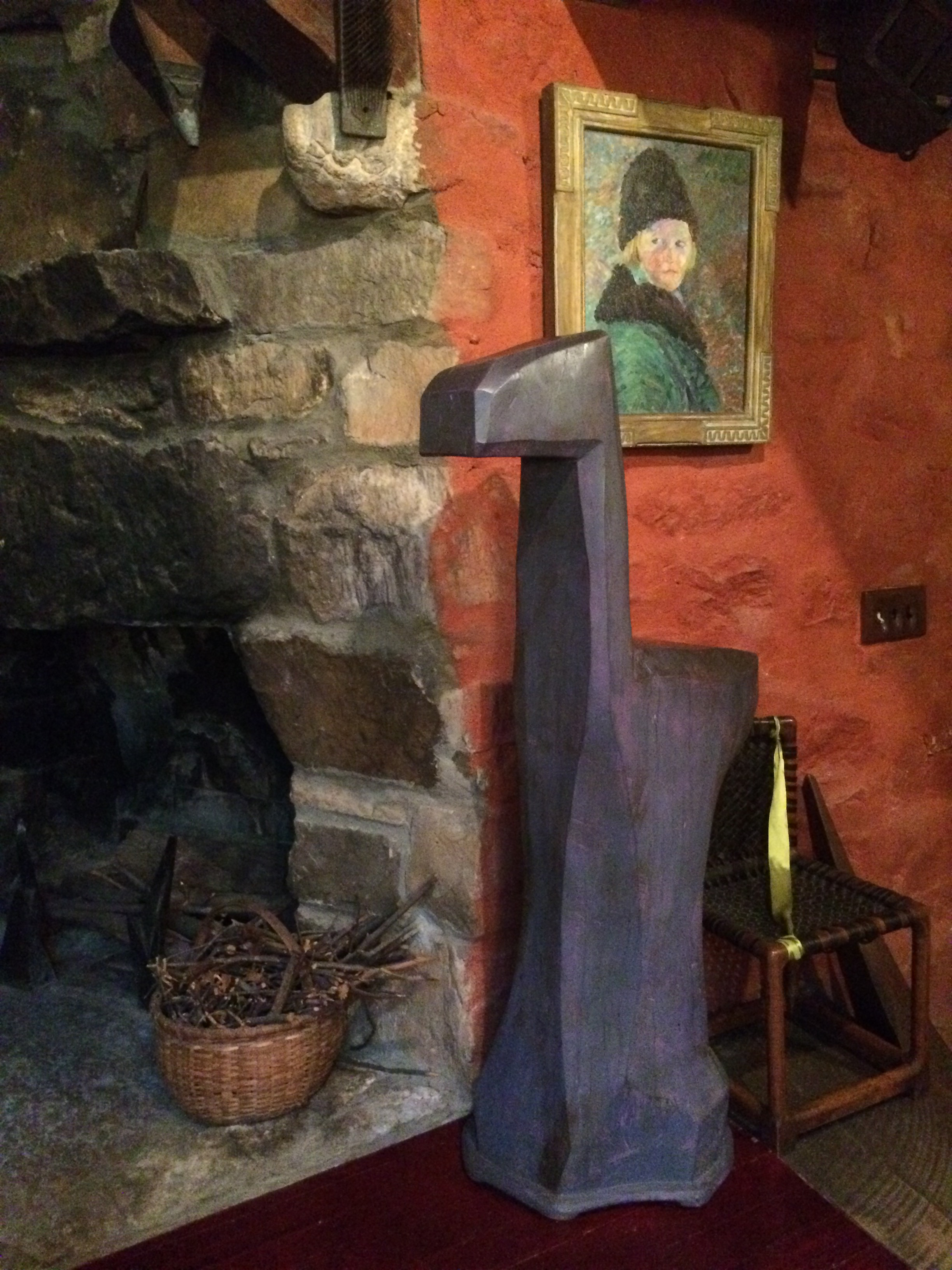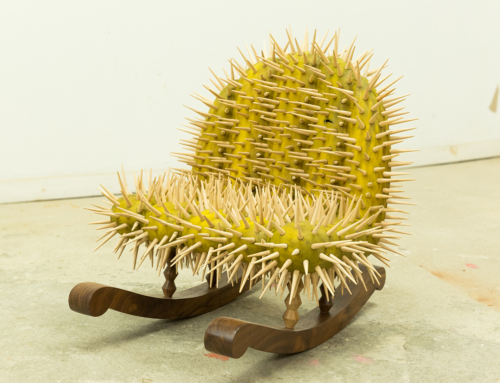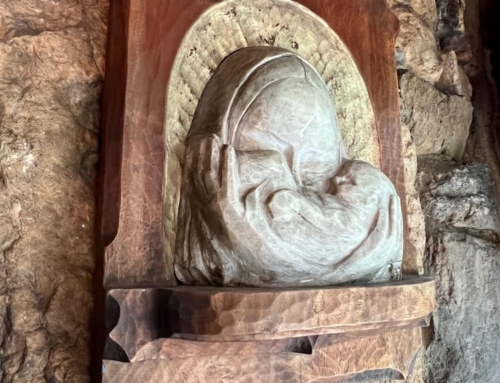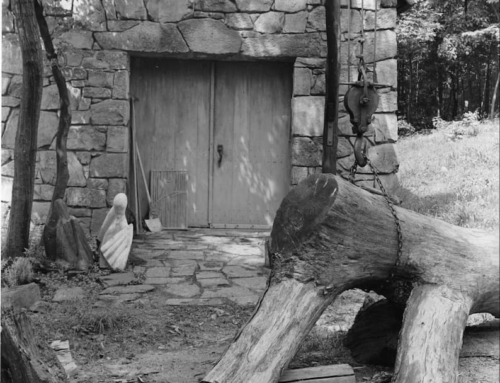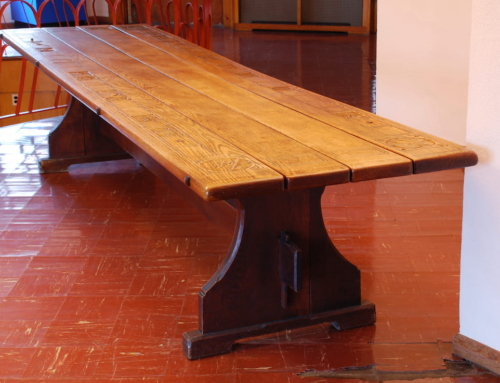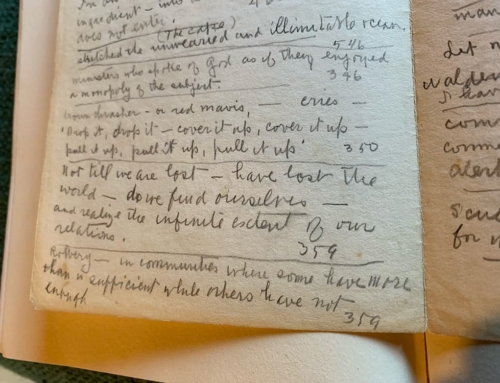Fall is a time of fresh air and striking foliage, and a time when nature’s critters try to find their way indoors. While keeping an eye out (and an ear out) for mice and squirrels who would like to live in Esherick’s house, this month we found ourselves recognizing all the animal faces and forms that exist in Wharton’s work. Ceramic monkeys, bronze pelicans, wooden apes – we’ve got a veritable zoo within these studio walls!
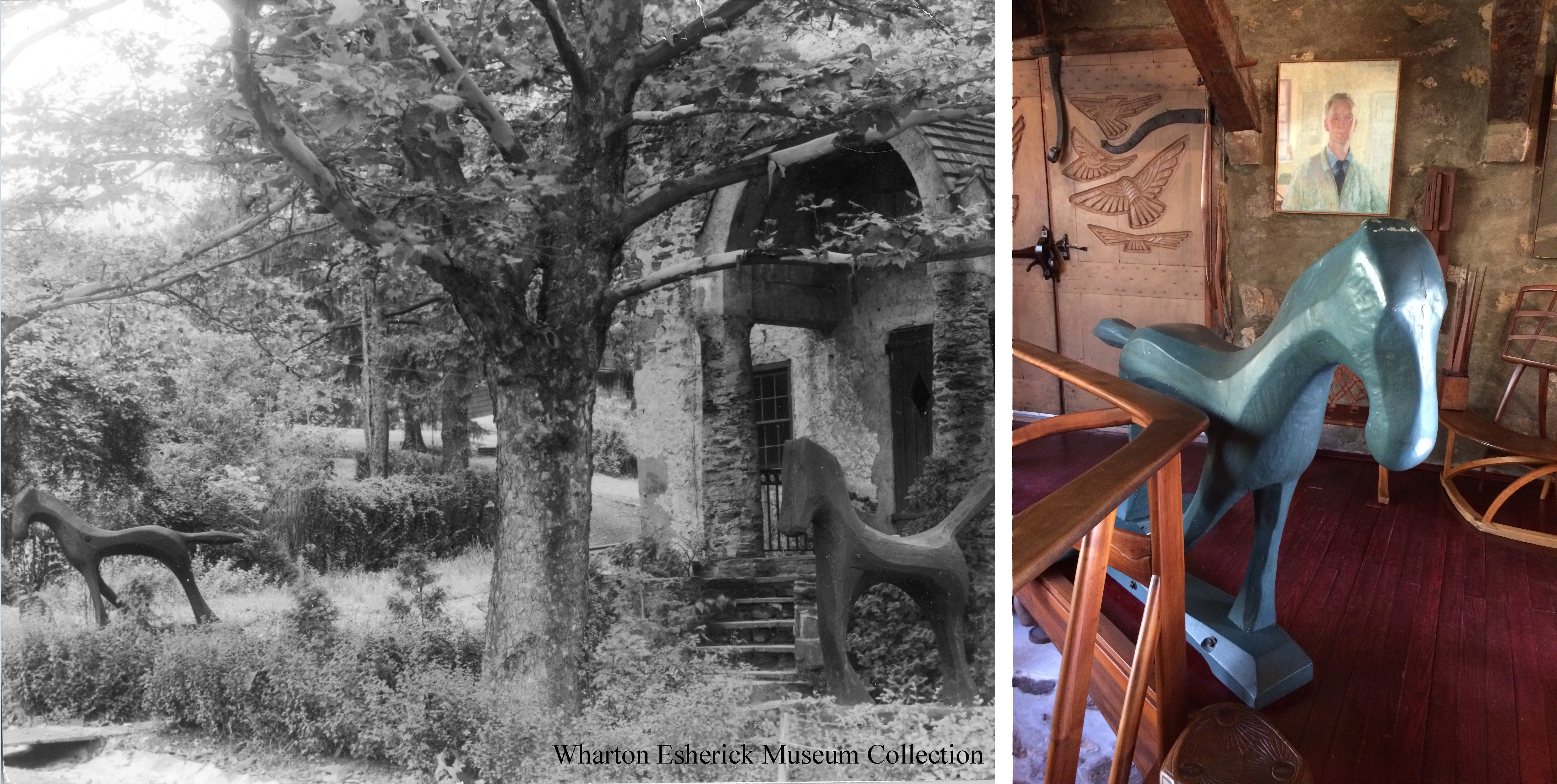
Left: “Cheeter” and “Jeeter” on display at Hedgerow Theatre c. 1935-56. Right: “Cheeter” inside the Studio today.
A few of these animal friends were initially designed for the outdoors. Cheeter, the blue horse sculpture which stands in the gallery of the studio is well known to our museum guests. Cheeter and his pal Jeeter stood outside of the Hedgerow Theatre in Rose Valley, PA from the time of their creation in 1934 until 1956 when it was determined they should be brought indoors. While Cheeter is blue now, he and Jeeter have been many colors, getting a fresh coat and fresh color as the years went on. Naturally, the pair became beloved by the neighborhood around the Hedgerow Theatre and when it came time for them to be removed, a full-size casting of Cheeter was installed at the School in Rose Valley just across the road. Children there still continue to climb up onto Cheeter’s back! Jeeter, on the other hand, made his way to Florida and is now in the collection of Modernism Museum Mount Dora.
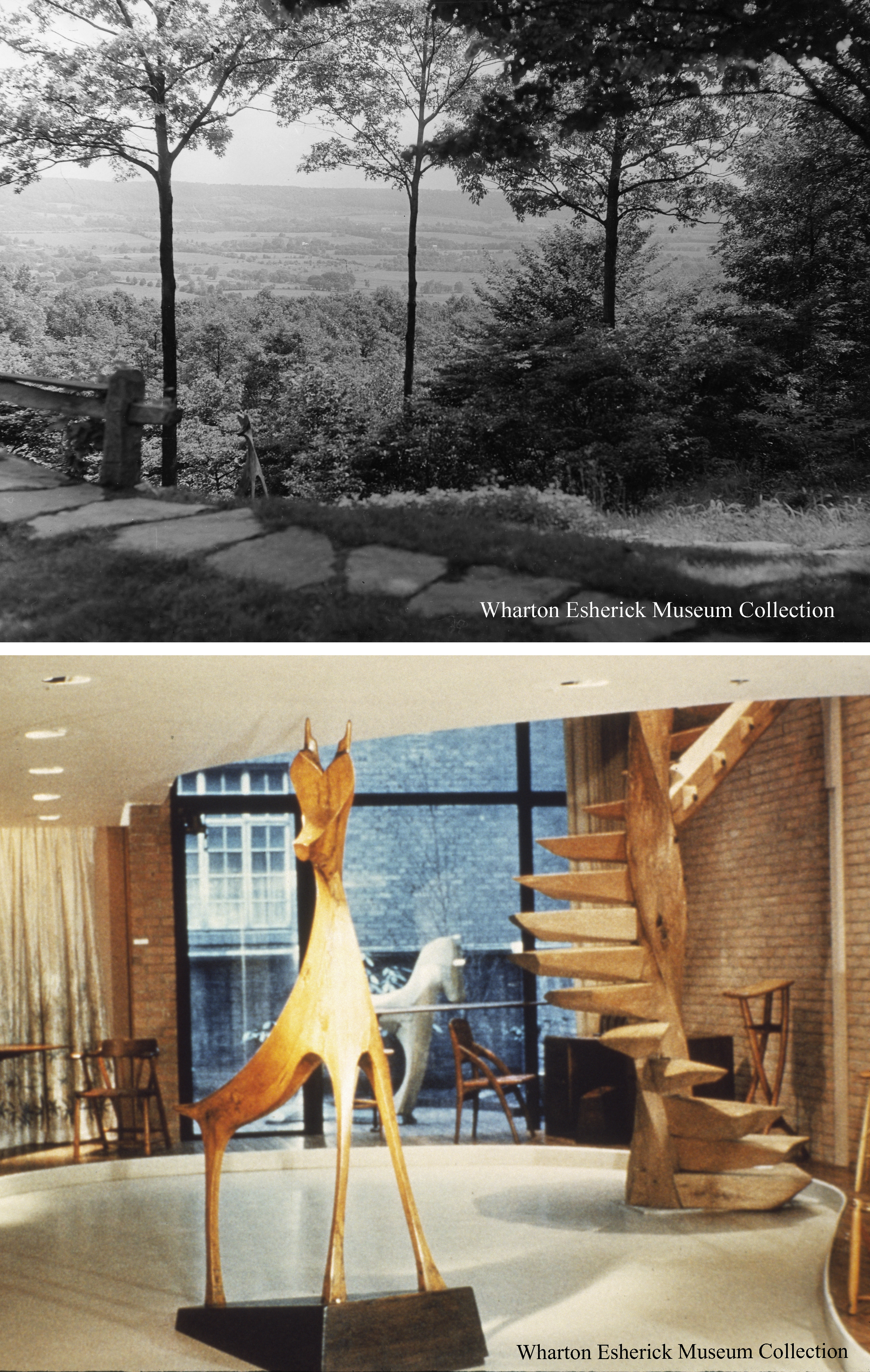
Top: “Darling” in the woods outside the Studio. Bottom: “Darling” on display at Wharton’s 1958-59 retrospective at the Museum of Contemporary Crafts.
Cheeter and Jeeter were both made from pieces of wood brought to Wharton by his friend and wood supplier, Ed Ray. While running his logging business Ed would find sections of trees in which he could envision an animal, maybe seeing a suggestion of a leg or two, and bring it to Wharton to carve. This was the case for a sculpture entitled Darling from 1940. Darling, carved from a section of white oak, depicts an elegant and alert looking deer, something we see plenty of in the woods surrounding the Museum. Having stood out in the elements, Wharton did have to make some repairs on this sculpture (which he playfully referred to as “dental work”) replacing a rotting section of the sculpture around to nose of the deer’s face. Darling was initially exhibited outside the Hedgerow Theatre and was later among pieces featured in Wharton’s 1958 retrospective at the Museum of Contemporary Crafts in New York City. The piece is now part of the Pennsylvania Academy of Fine Arts’ collection.
Garden Horse was another wood animal sculpture to stand outside the studio. Made in 1935, only a year after Cheeter and Jeeter, Garden Horse has a simplified approach. It’s primarily vertical with broad planes to define the form, notably similar to the posts which Wharton designed for the Curtis Bok house around this same time. Unlike his companions Garden Horse was functional too – he marked the gas fill for Wharton’s kitchen stove! Spotting these sculptures in our photos and archives remind us of the fluid movement that once took place here, with sculptures coming and going, both inside and out!
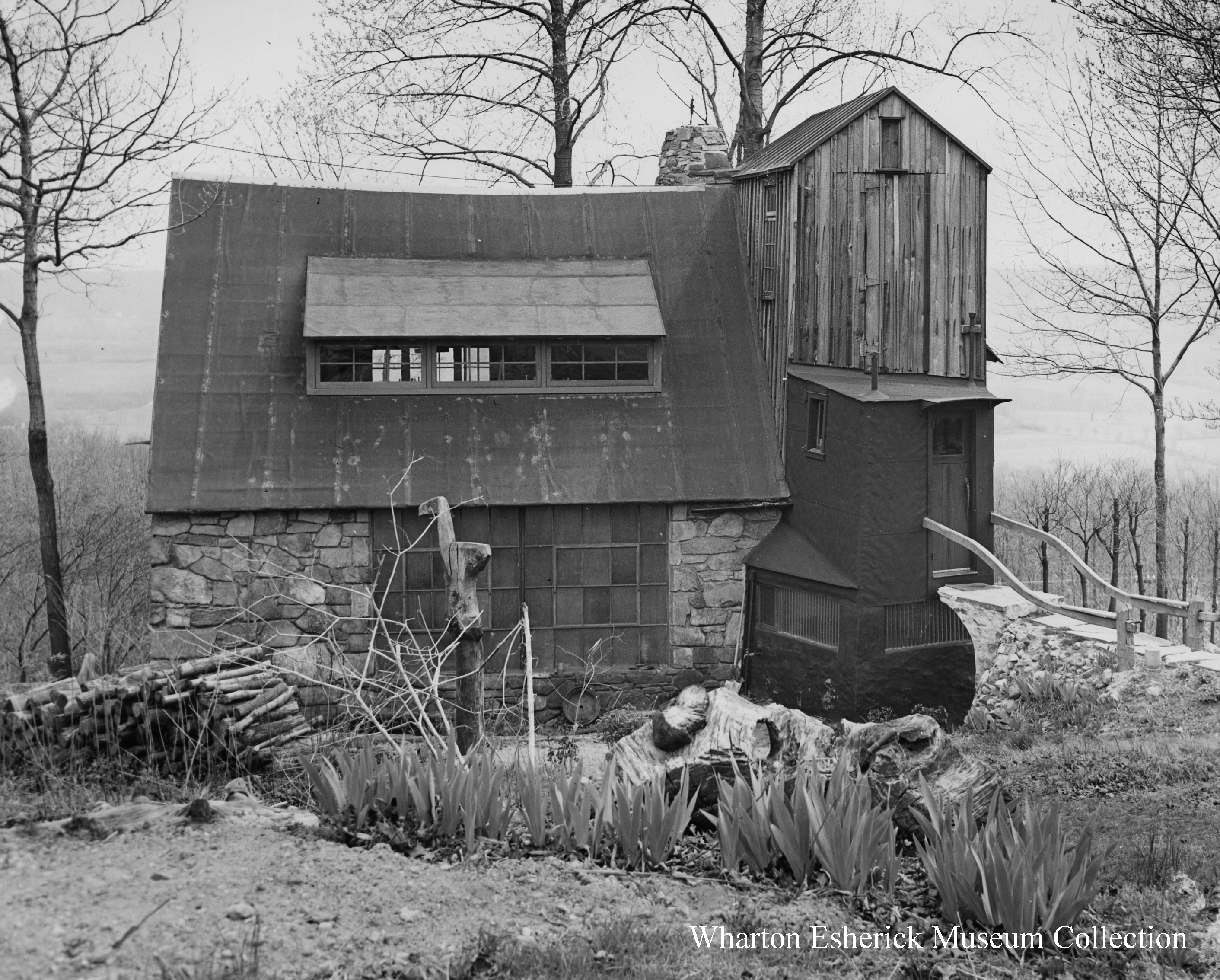
The Studio in 1947, with “Garden Horse” outside marking the gas fill. Note the trees in the distance which were “topped” by Wharton to keep the valley view.
Post written by Visitor Experience and Program Specialist, Katie Wynne.

